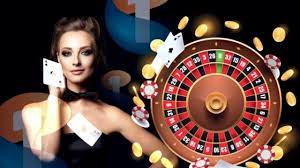Introduction
Slot machines have become a cornerstone of the gambling industry, captivating millions of players around the world with their colorful graphics, engaging sound effects, and the thrill of potentially hitting the jackpot. But beyond the flashing lights and the zara play of spinning reels lies a rich history and a complex mechanism that defines the allure of slots.
A Brief History of Slot Machines
The origins of slot machines date back to the late 19th century. The first slot machine, known as the Liberty Bell, was invented in 1895 by Charles Fey, a mechanic from San Francisco. This machine featured three spinning reels and five symbols: horseshoes, diamonds, spades, hearts, and the Liberty Bell. When players matched three Liberty Bells, they won the maximum payout of 50 cents—a significant amount for that time.
As the popularity of slot machines grew, so did their design and functionality. By the early 20th century, slot machines had made their way into bars and saloons, offering patrons a new form of entertainment. The introduction of coin-operated machines led to a surge in popularity, and by the 1930s, slots were a common sight in casinos.
How Slot Machines Work
Modern slot machines operate on a combination of random number generators (RNGs) and complex algorithms, ensuring fair play and unpredictable outcomes. When a player pulls the lever or presses the button to spin the reels, the RNG generates a random combination of symbols. If the combination matches a winning line, the player receives a payout based on the machine’s paytable.
Slot machines can vary significantly in terms of themes, gameplay mechanics, and payout structures. Here are a few key features:
- Reels and Paylines: Most traditional slots feature three or five reels, with varying numbers of paylines that determine winning combinations. Players can often choose how many paylines to activate, impacting their bet and potential payouts.
- Symbols and Bonus Features: Slots include various symbols, including standard symbols, wilds, and scatters. Wild symbols can substitute for other symbols to create winning combinations, while scatter symbols often trigger bonus features like free spins or mini-games.
- Jackpots: Many slots offer progressive jackpots, where a portion of each bet contributes to a growing prize pool. This can lead to life-changing payouts for lucky players.
The Allure of Slot Machines
The appeal of slot machines can be attributed to several factors:
- Simplicity: Unlike other casino games that require strategy or skill, slots are easy to play. Players simply insert their money, choose their bet, and spin the reels.
- Variety: With thousands of different slot games available, players can find a machine that suits their interests, whether it’s based on movies, TV shows, or classic fruit themes.
- Entertainment Value: The combination of vibrant graphics, immersive soundtracks, and engaging gameplay creates a thrilling experience that keeps players coming back for more.
- Potential Rewards: The chance to win big, especially with progressive jackpots, adds an exciting element to the gameplay. Even small wins can be gratifying, providing a sense of accomplishment.
Conclusion
Slot machines continue to evolve, with advancements in technology leading to new features and experiences for players. Whether in traditional brick-and-mortar casinos or online platforms, slots remain one of the most popular forms of gambling. Their combination of entertainment, simplicity, and potential for significant payouts ensures that they will remain a staple in the gaming world for years to come.
